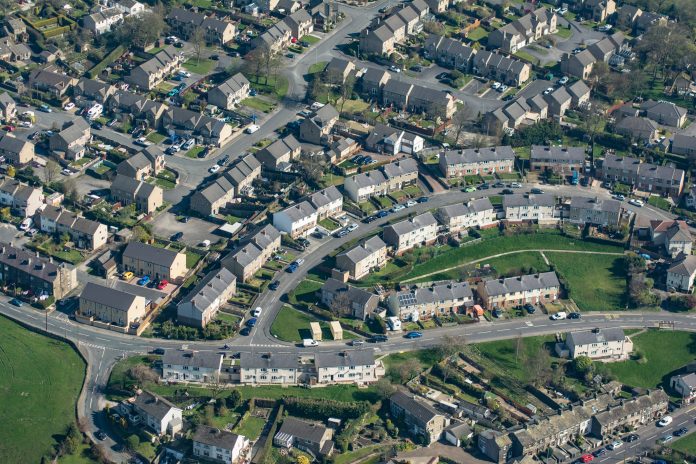Following the announcement in the Queen’s Speech of a bill to overhaul planning in England, Alex Wrottesley of Landmark Information argues that digitisation and geospatial data will be essential to making the system more collaborative, inclusive and productive
With the Queen outlining the government’s priorities for the year ahead in the recent official state opening of parliament, a bill focused on modernising England’s planning system was formally announced.
In the speech, the Queen confirmed that the reforms will help more people to own their own home and that laws to modernise the planning system will enable more homes to be built.
When the government published its Planning for the Future White Paper in August 2020 to outline what the reforms would look like, we were encouraged by the proposed steps to modernise the system. It was good to see a focus on removing the reliance on “documents and not data”, legacy systems and departments operating in silos.
The three pillars of planning
The paper included three “pillars”, focusing on planning for “development”, “beautiful and sustainable places” and “infrastructure and connected places”. Digitisation is fundamental to delivering the policy outcomes sought in each of these areas. If we can take what is a predominantly analogue service to digital, and make planning information easier to find, understand, share and interact with we will all benefit.
The planning system isn’t just about decisions and permissions. It impacts where people choose to live, the investment decisions that businesses make and drives engagement in local politics.
The use of interactive geospatial technology, real-time data, high-quality virtual simulations and standardised data will therefore offer an opportunity to deliver a positive shift in both the speed and quality of decision making. It would make planning more collaborative and accessible, ensuring that all outcomes are founded on the most current, relevant and accurate data. This would make a real difference with the way our communities engage with the process.
A fully digitised and integrated system
If you consider the planning process today, while online access to information is possible through local authority portals, the way in which the data is available is inconsistent and often confusing. The systems within planning authorities commonly sit on separate platforms, preventing cross-referencing of data by staff, councillors and indeed anyone viewing the information from outside an authority.
A fully digitised and integrated system would make it easier to find and search the detail of an application, to see the data and drawings, and offer the opportunity to directly interact or submit feedback.
Digitisation will also deliver huge benefits to the development and distribution of local plans. Making local plans digitally interactive across the nation would standardise processes, offer greater accessibility, collaboration and community engagement in planning applications and decisions.
It will require significant commitment and innovation from both the public and private sectors to overhaul the system. The good news is that much of the data required is already available.
For example, ecological and flood risk data is routinely provided for major planning applications, yet today the results of these, and the influence on decision making, is unused in the local plan system because of the lack of cross-referencing between systems.
Bring together local plans and planning application data onto one publicly available geospatial platform can deliver real benefits, but the more significant the proposed reforms are, the more crucial it is that the underlying data for decision making is authoritative, accurate and subject to scrutiny.
Fundamentally, in order to realise the government’s ambitions for a digitally interactive system, significant funding must be dedicated to making the reforms a success; not just to invest in the tools and technology to make this happen, but equally importantly, to invest in the people required to operate and administer these systems and address specific skills shortages, particularly in the geospatial area.
It will require significant commitment and innovation from both the public and private sectors to overhaul the system, but if we get this right, we will have a far richer, modernised system. One that will be more accessible, streamlined and interactive; benefiting not only for the industry, but the nation as a whole, financially, economically, socially and environmentally. It could be the defining moment for our planning system.
 Alex Wrottesley
Alex Wrottesley
Managing director – Geodata
Tel: +44 (0) 3300 366 000
Twitter: @LandmarkUK
LinkedIn: Landmark Information Group
YouTube: LandmarkUK

















